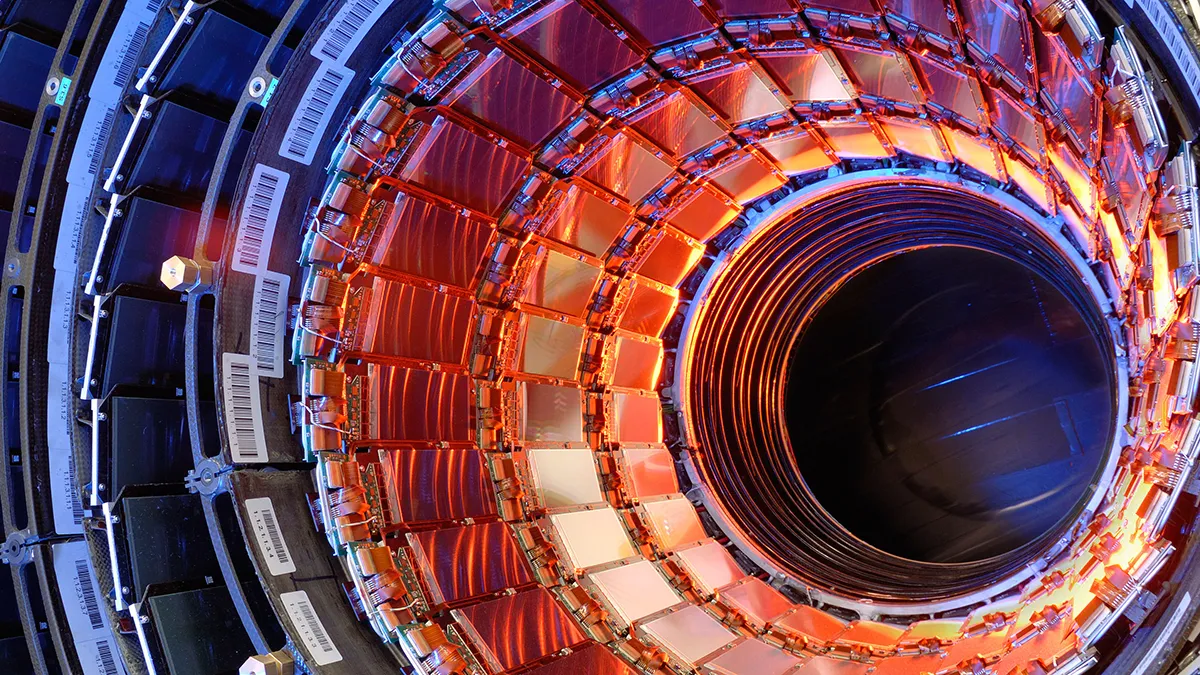Table of Contents
Isaac Asimov famously said that the most exciting phrase in science is not “Eureka!”, but “That’s funny…”
What that means is that the biggest discoveries in science are as often not finding what you were looking for, but finding something completely unexpected. Consider the famous Michelson-Morley experiment. This was an attempt to prove the existence of the “luminiferous aether”, the assumed “medium of space”, which carried light waves. The experiment attempted to compare the speed of light in different directions: instead, it found that the speed of light was uniform, no matter which way they looked.
Michelson-Morley’s failure led directly to the formulation of Special Relativity, less than 20 years later.
Another famously “That’s funny…” moment was the double-slit experiment, its unexpected result was a big boost to quantum theory.
Now something funny is going on at the Large Hadron Collider.
Scientists at the Large Hadron Collider (LHC) have recorded some highly unusual data that could point to an entirely new force of nature, which would mean a whole new area of physics. The secret lies in an elusive, unstable particle called a B meson, which isn’t biodegrading according to plan.
Mesons are hadrons: subatomic particles that form matter, unlike bosons which compose the four elementary forces. Particles like mesons are only seen in nature in high-energy collisions between other particles, as in cosmic rays, or as artificially generated in particle colliders like the LHC. Their lifespans are measured in hundredths of microseconds: as energy levels drop, they rapidly decay into stable particles like electrons, neutrinos and photons. Mesons are composed of even more fundamental particles called quarks.
The scientists at the European Organization for Nuclear Research (CERN) call B mesons “tantalizing tensions,” since the particles break apart into different amounts of electrons and muons than the standard model of physics predicts they should.
B mesons are paired quarks that move together and rapidly decay. While scientists have noticed several previous anomalies in B mesons, this latest observation in decay mode is an even bigger deal. As the B mesons decay in the LHC, there are more electrons and fewer muons than there should be.
“That’s funny…”
Of course, the anomalous results could well be the result of some unaccounted-for experimental error. Unlike less rigorous branches of science, physicists tend not to be comfortable with results that aren’t absolutely certain to the tiniest degree.
The Guardian reports the likelihood of CERN’s results being a fluke are just one in 1,000, but that isn’t a small enough chance for the standards of physics observation—scientists prefer to reduce the chance of a fluke to one in over 1 million.
As physics began to break matter down to molecules, then atoms, then electrons, protons, etc., they began to run out of descriptors. “Positive” and “negative” gave way to “spin” and, eventually, other qualities which, for lack of better names, were called “strange”, “charm”, “colour”, “flavour”, and so on.
The B meson, short for beauty meson, is one of the major focuses of study by the LHCb experimental team. This major LHC project studies all the beauty quarks, of which B mesons are just one example. CERN explains:
“The measurement made by the LHCb collaboration compares two types of decays of beauty quarks. The electron and the muon, together with a third particle called the tau, are types of leptons and the difference between them is referred to as ‘flavours’. The Standard Model of particle physics predicts that decays involving different flavours of leptons, such as the one in the LHCb study, should occur with the same probability.”
This is where the difference emerged: the flavors aren’t occurring with the same probability.
“That’s really funny…”
Assuming – a big, big assumption, remember – that it’s not an experimental error, this could be the start of something big.
What could account for the discrepancy? Scientists aren’t sure, but if it really is legitimate, it means we’ll need a new specific flavor of physics to go with the mismatched lepton flavors found in the experiment. The lack of a clear explanation is exactly why this news is so exciting.
But, as I say, physicists don’t accept such things lightly. The Standard Model of subatomic particles has been so spectacularly successful that they’re not going to go changing without absolutely rigorous evidence.
CERN says the LHCb experimental team is well positioned to continue to explore this unpredictable difference. They’ll upgrade the team’s detector next year and start running new versions of the experiment. With more results that show the same anomaly, the team will be able to confirm or deny the existence of a new kind of physics to match.
Popular Mechanics
Much as a new physics would be exciting, it’ll almost certainly be a fizzer. Remember the flap over “faster-than-light neutrinos”, a few years back?
Please share this article so that others can discover The BFD









